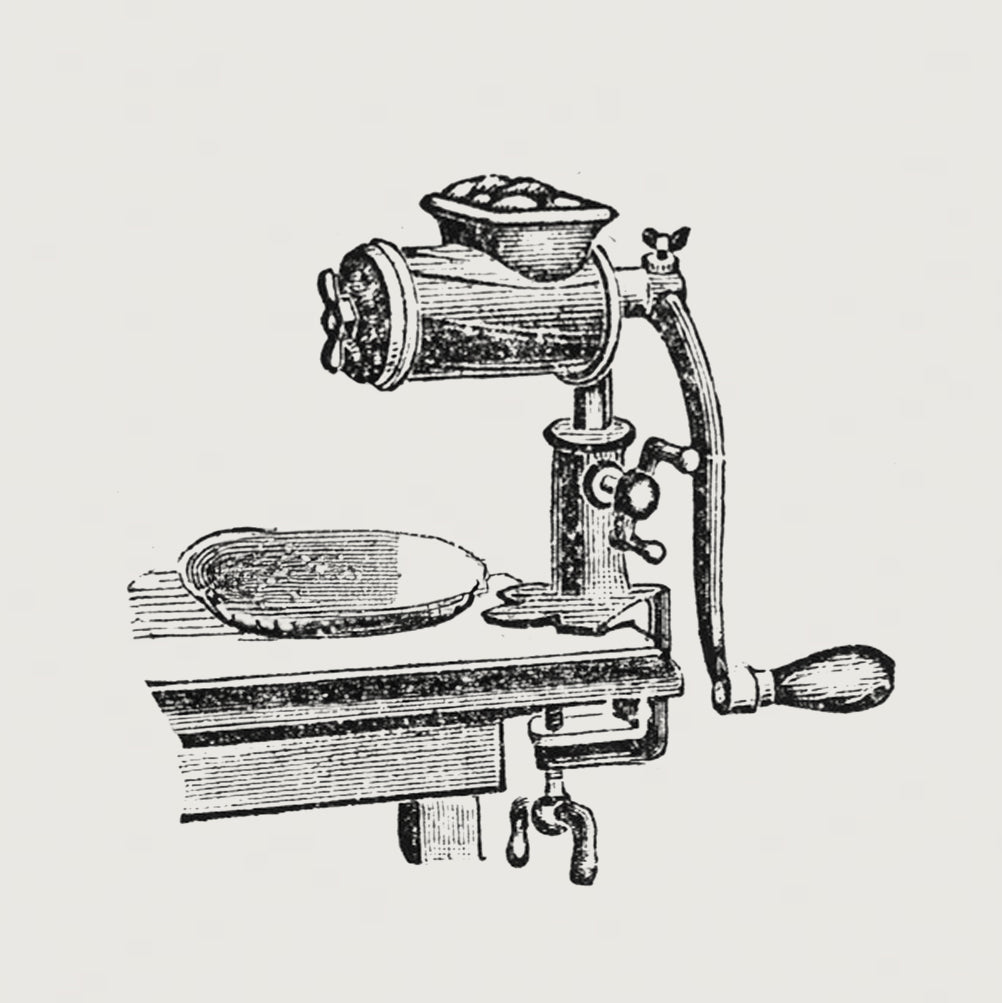It clamps to the table. Heavy cast iron. No rubber grip. No design thinking. Just mindless steel teeth biting into whatever wood you attach it to. Pine. Antique oak. Old boards. No discrimination.
What’s strange isn’t that this hundred-year-old meat grinder still works. What’s strange is that someone packed it in the first place.
When you’re deciding what to bring to travel to another planet — what the other side of the world must have felt like in the early 1900s — you grab the meat grinder.
Before she locked her front door for good, she made sure it was in with the rest of her essentials for the long forever voyage.
The grinder cleared customs, and got straight to work in their new family home. Miles away from the one they left.
She passed it on. To someone who didn’t cook. Then it was passed to someone who did. Then to a woman named Lynne, who clamped it to her unfortunate counter in the 1970s and turned the handle.
Not that the contraption was ever necessary. But by then it wasn’t really needed. If you truly enjoyed turning large meat into tiny meat, electric grinders were the go-to.
But this one stayed.
It came out for baking days. For holidays. For the kinds of recipes that start with “this is how we’ve always done it.”
It’s still around today. Grinding something.
Unlike most heirlooms, nobody knew why this one was special.
But it was so strange, it must have been.
Or maybe it was so unimportant, that became its story.
Make some memories,
The Ironclad Co.

Journal








